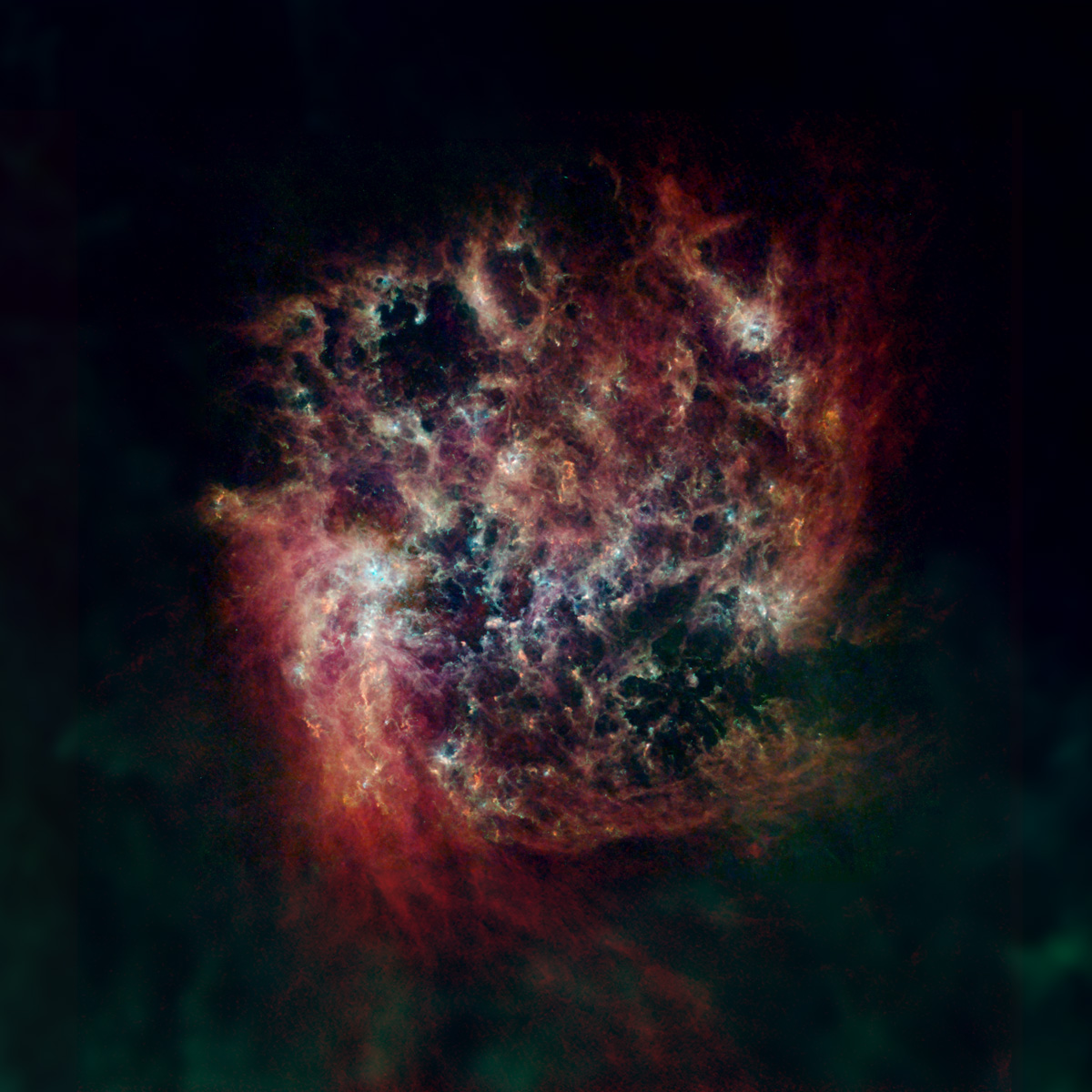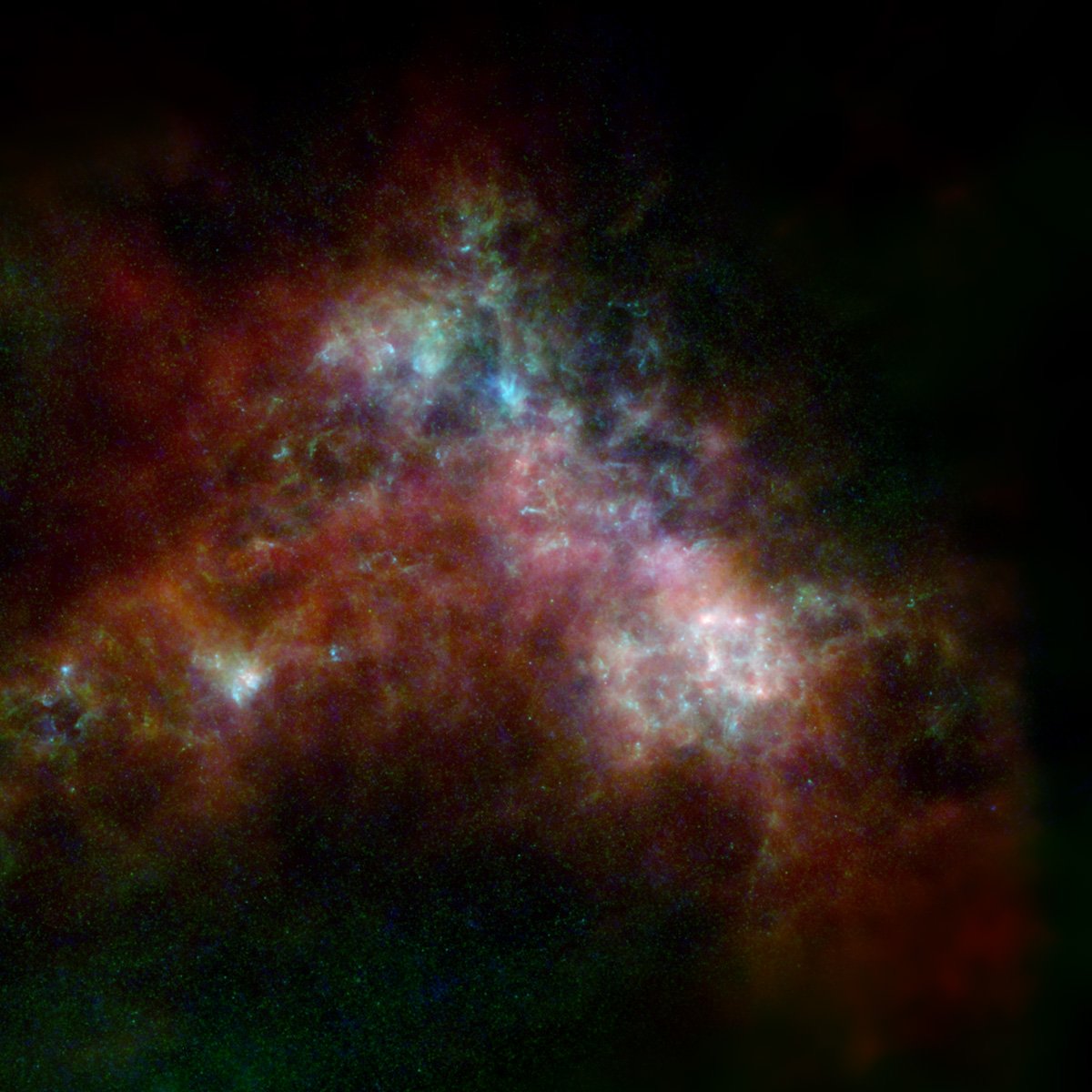JPL: New Images Using Data from Retired Telescopes Reveal Hidden Features
Posted: Fri Jun 17, 2022 12:23 pm
New Images Using Data from Retired
Telescopes Reveal Hidden Features
NASA | JPL-Caltech | 2022 Jun 16
The Quest for the Missing Dust. I. Restoring Large-scale
Emission in Herschel Maps of Local Group Galaxies ~ Christopher J. R. Clark et al
Telescopes Reveal Hidden Features
NASA | JPL-Caltech | 2022 Jun 16
- The Andromeda galaxy, or M31, is shown here in far-infrared and radio wavelengths of light. Some of the hydrogen gas (red) that traces the edge of Andromeda’s disc was pulled in from intergalactic space, and some was torn away from galaxies that merged with Andromeda far in the past. Credit: ESA/NASA/JPL-Caltech/GBT/WSRT/IRAM/C. Clark (STScI)
The stunning perspectives show four of our galactic neighbors in a different light.
- The Triangulum galaxy, or M33, is shown here in far-infrared and radio wavelengths of light. Some of the hydrogen gas (red) that traces the edge of the Triangulum’s disc was pulled in from intergalactic space, and some was torn away from galaxies that merged with Triangulum far in the past. Credit: ESA/NASA/JPL-Caltech/GBT/VLA/IRAM/C. Clark (STScI)
New images using data from ESA (European Space Agency) and NASA missions showcase the dust that fills the space between stars in four of the galaxies closest to our own Milky Way. More than striking, the snapshots are also a scientific trove, lending insight into how dramatically the density of dust clouds can vary within a galaxy.
With a consistency similar to smoke, dust is created by dying stars and is one of the materials that forms new stars. The dust clouds observed by space telescopes are constantly shaped and molded by exploding stars, stellar winds, and the effects of gravity. Almost half of all the starlight in the universe is absorbed by dust. Many of the heavy chemical elements essential to forming planets like Earth are locked up in dust grains in interstellar space. So understanding dust is an essential part of understanding our universe.
The new observations were made possible through the work of ESA’s Herschel Space Observatory, which operated from 2009 to 2013. NASA’s Jet Propulsion Laboratory in Southern California contributed key parts of two instruments on the spacecraft. Herschel’s supercold instruments were able to detect the thermal glow of dust, which is emitted as far-infrared light, a range of wavelengths longer than what human eyes can detect.
Herschel’s images of interstellar dust provide high-resolution views of fine details in these clouds, revealing intricate substructures. But the way the space telescope was designed meant that it often couldn’t detect light from more spread out and diffuse clouds, especially in the outer regions of galaxies, where the gas and dust become sparse and thus fainter.
For some nearby galaxies, that meant Herschel missed up to 30% of all the light given off by dust. With such a significant gap, astronomers struggled to use the Herschel data to understand how dust and gas behaved in these environments. To fill out the Herschel dust maps, the new images combine data from three other missions: ESA’s retired Planck observatory, along with two retired NASA missions, the Infrared Astronomical Satellite (IRAS) and Cosmic Background Explorer (COBE). ...
In the images, red indicates hydrogen gas, the most common element in the universe. This data was collected using multiple radio telescopes located around the globe. The image of the Large Magellanic Cloud shows a red tail coming off the bottom left of the galaxy that was likely created when it collided with the Small Magellanic Cloud about 100 million years ago. Bubbles of empty space indicate regions where stars have recently formed, because intense winds from the newborn stars blow away the surrounding dust and gas. The green light around the edges of those bubbles indicates the presence of cold dust that has piled up as a result of those winds. Warmer dust, shown in blue, indicates where stars are forming or other processes have heated the dust. ...
The Quest for the Missing Dust. I. Restoring Large-scale
Emission in Herschel Maps of Local Group Galaxies ~ Christopher J. R. Clark et al
- Astrophysical Journal 921(1):35 (2021 Nov 01) DOI: 10.3847/1538-4357/ac16d4
- arXiv > astro-ph > arXiv:2107.14302 > 29 Jul 2021 (v1), 09 Sep 2021 (v2)





